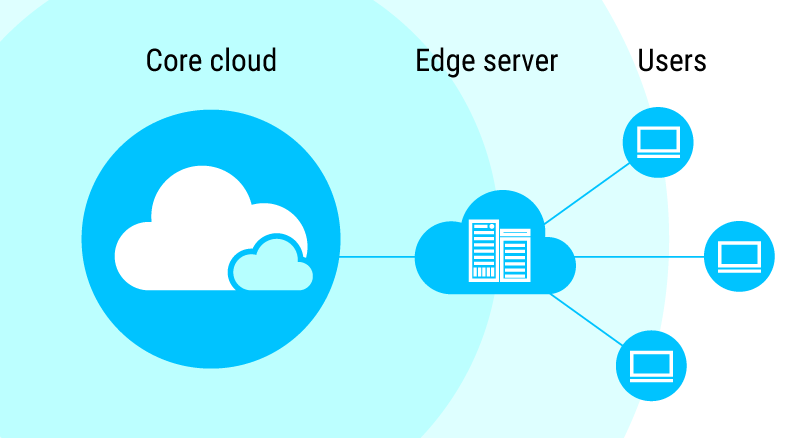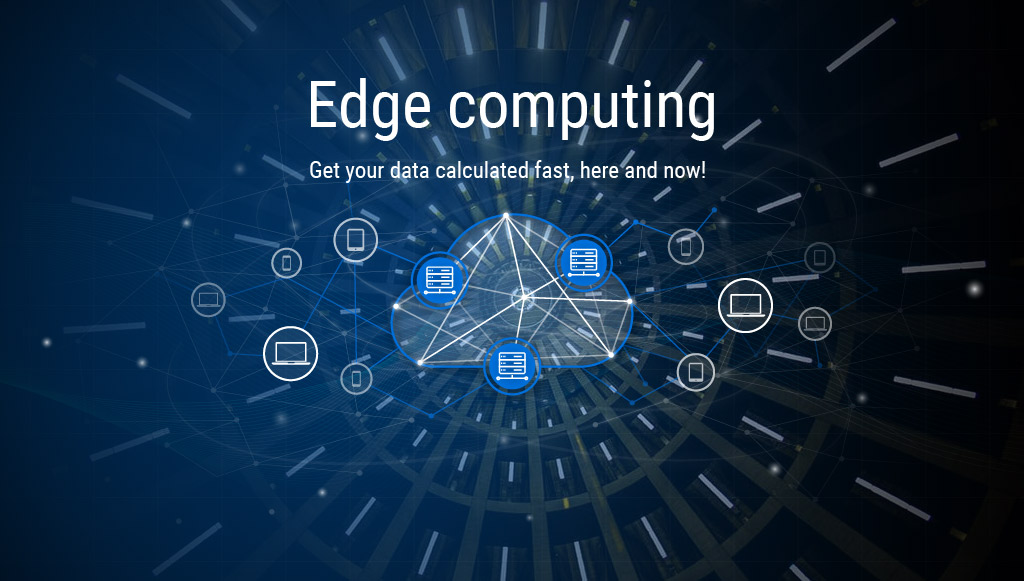WHY THE EDGE COMPUTING?
If you ever worked with a server managing distributed devices (e.g. IoT grid), or a centralized cloud unit, you have most likely noticed some simple tasks taking considerably longer time to complete. Usually the first thing to blame is internet connection, then hardware. But if your main server (the “brain” of computing), needs to communicate with hundreds of devices simultaneously in various locations, how can it be effective? The main server or central cloud must constantly compute, coordinate, process incoming and outgoing data to numerous connections. With number of network devices linked to the core facility constantly increasing, we shall face the significant service degradation. In order to combat this as well as other problems, Edge Computing was invented.
THE PRACTICAL SOLUTIONS
Edge Servers are positioned between end users and main/core server. The Edge Server creates a clean, simplified data-flow between the main cloud and users, which alleviates server strain. At the same time users will enjoy much faster performance, as response time from a local Edge Server is significantly reduced. Below we will illustrate this with two examples:

Example 1:
A good example of Edge computing can be a global taxi hiring application. Imagine all requests are sent to a single centralized server or cloud which needs to calculate all possible solutions, matching incoming requests up with the fleet of live service providers, as well as keeping track of every little change in the database. Clearly this solution will not function properly. Besides slow response due to distance and associated latency, server capability will shortly reach its limit and entire system will come to a halt. Any competitive market, especially similar to taxi aggregators, will not tolerate such behavior. Each unhappy customer could mean thousands of dollars in lost profit! Edge computing would be a life saver in this situation. Our service will manage all requests, calculates taxi movements and report only essential data to the core or users. It would help to significantly improve performance, reduce load on the central cloud/service and deliver fast, best possible user experience.
Example 2:
For companies with global presence, it’s a challenge to manage all resources: employees, premises, equipment, or just how many bottles of wine to keep in the office pantry. Of course cloud is the best solution to keep a full control over your digital footprint. It could help with security, cost reduction and power efficiency. But what happens if your remote office is in Brazil and core of your cloud servers in Europe? Thin client performance connected to virtual office in Europe will be extremely slow due to high latency and poor connectivity between Europe and Latin America. This is exactly the reason you need Edge computing servers! They will provide better connectivity and performance for remote users, while still allowing full control over digital premises for users at centralized locations.
OUR NETWORK AT YOUR SERVICE
Edge servers perform at their best when paired with IPTP global network. Our infrastructure deployed over 100 low latency channels (please check the map), with presence in 64 cities and 37 countries worldwide. Such broad geographical distribution, allow us to deploy edge servers closest to your end users, as well as getting you most optimal connectivity across the globe.
Get your data processed fast, here and now! Organize fast virtual offices, worldwide distributed services; build grids of IoT devices on global scale with speed off a local connectivity by using IPTP Networks benefits from the Edge computing servers!

